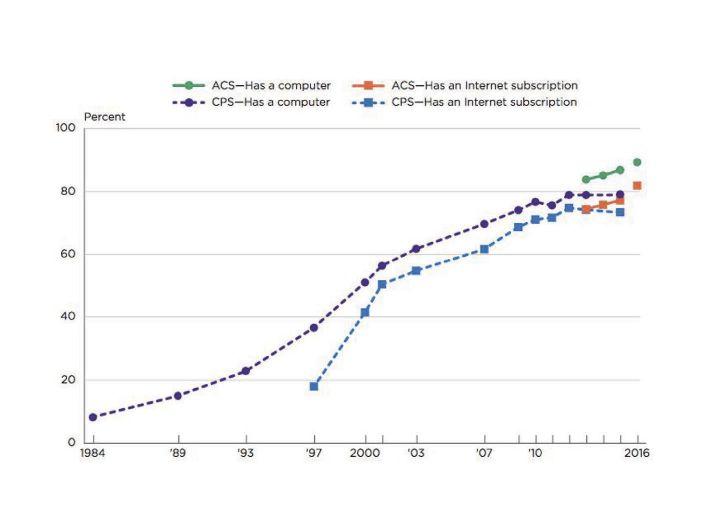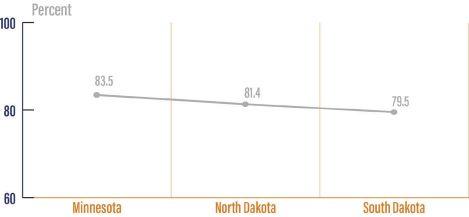
3 minute read
Q. INSIGHTs & INTUITION
What effect do you foresee automation and robotics having on our regional workforce?

Automation is transforming the workplace by making many existing jobs obsolete, as it creates jobs that have not existed previously.
Those already in the workforce need onramps to learn new skills to remain relevant as these new workplaces evolve. Those entering the workforce need both professional skills for fast-paced technologically savvy decision making, and cutting edge technical skills.
Workers can earn certificates and/or degrees through online classes offering state-of-the-art simulations in fields such as mechanical maintenance, where BSC students don’t just learn to weld, they learn to program automated welders.
Education’s best response to this transformation is to develop education/industry partnerships. This collaboration will lead to a more flexible, resilient workforce and a brighter future for our region.
Automation is introduced to save labor, improve quality and increase productivity. Workers previously occupied with repetitive and monotonous tasks can focus their efforts in new ways.
Automation requires an intelligent, highly-skilled workforce for installation, operation and maintenance. To acquire the knowledge and skills associated with automated technologies, many in the workforce will need additional training.
Individuals versed in robotics, computers, electronics, pneumatics and mechanical systems are in high demand as companies add more automated technologies.
Thief River Falls, East Grand Forks and Roseau, Minn.

Automation and robotics will impact our future workforce. Unemployment is low in South Dakota, yet there are hundreds of jobs waiting to be filled in which automation and robotics systems could ease workforce demand.
By implementing these practices, our graduates – who are trained to program and maintain the automation and robotic systems – will contribute to a stronger, more efficient workforce. People are scared that bringing in robots and automated systems will result in replacing people’s jobs, but it won’t. Jobs will evolve, but they won’t be eliminated.
Skill sets involving automation and robotics will be vital in creating new, technical occupations for a more efficient and productive future workforce.
Steve Johnson
Manufacturing Department Chair
North Dakota State College of Science
Wahpeton, N.D.
Brooks Jacobsen

Electronic Systems Technology/Robotics Department Supervisor
Lake Area Technical Institute
Watertown, S.D.
North Dakota has a significant shortage of both skilled and unskilled labor in the manufacturing market.

The largest effect of automation will come in positions that require low-skill, repetitive-motion tasks such as machine loading, part cleaning and deburring. Robots and automated systems are a viable alternative for these repetitive tasks. These types of jobs are hard to fill and typically have a high turnover rate.
Meanwhile, the increasing use of automation and robotics will continue to provide a plethora of opportunities to the technicians who integrate, program, troubleshoot and service these automated systems. These are high-skilled and high-paying jobs that will be in great demand over the next several decades.
The question is not the quantity of new jobs created, but their quality. Automation – “skill-biased technical change” – tends to replace lesseducated workers performing routine tasks, while it creates new demand for more-educated workers performing more complex analyses or engaging in social interactions and communication.
As Baby Boomers continue to retire, employers’ difficulties in filling middle-wage positions likely will grow, creating more opportunities for workers who gain the specific skills needed for these jobs.
The middle skill/middle wage jobs will replace the production and clerical jobs currently held by workers with high school or less education. I think we will see this in health care, advanced manufacturing and information technology.
A whole new set of jobs related to operation, maintenance, repair and programming the robotic and AI devices is being created, and a skilled workforce is needed.
Doug Darling

President
Lake Region State College
Devils Lake, N.D.
Housing starts in Midwest Census Region
Source: FRED/Federal Reserve Bank of St. Louis
Leading Economic Indicators, last18 months (50.0 = Growth Neutral)
Creighton University Business Conditions Index
U.S. Mid-America
“The July Business Conditions Index, which ranges between 0 and 100, declined to 57.0 from June’s 61.8 and May’s 67.3. This is the 20th straight month the index has remained above growth neutral 50.0, but the second straight month that the index has fallen.”
Source: Creighton University Economic Outlook report
Percentage of households that have a broadband Internet subscription, 2016
Drug overdose deaths
nationally & regionally
20162017
North Dakota: 8181

South Dakota: 75 69
Minnesota: 655 718
“Drug overdoses killed about 72,000 Americans last year, a record number that reflects a rise of around 10 percent, according to new preliminary estimates from the Centers for Disease Control. The death toll is higher than the peak yearly death totals from H.I.V., car crashes or gun deaths.”
– The New York Times, Aug. 15, 2018
Overdose deaths in thousands in preceding 12 months, nationwide
Source: Centers for Disease Control
Percentage of households with computer and
Source: U.S. Census Bureau’s American Community Survey Reports, August 2018.
Availability over time of day care for young children in Minnesota
Number of slots for children under 6, across all providers types (2002=100). Source: Minnesota Department of Human Services












